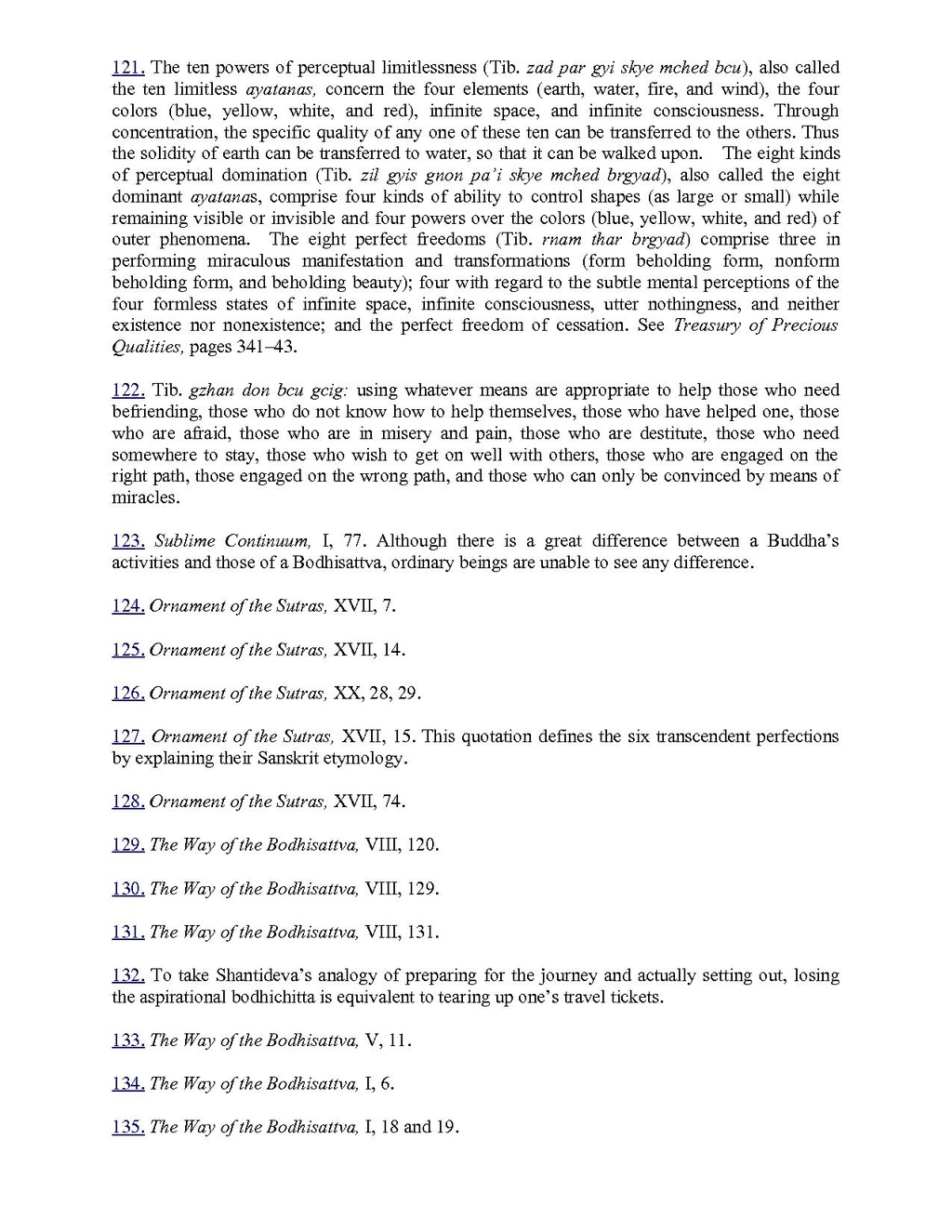121. The ten powers of perceptual limitlessness (Tib. zad par gyi skye mched bcu), also called
the ten limitless ayatanas, concern the four elements (earth, water, fire, and wind), the four
colors (blue, yellow, white, and red), infinite space, and infinite consciousness. Through
concentration, the specific quality of any one of these ten can be transferred to the others. Thus
the solidity of earth can be transferred to water, so that it can be walked upon. The eight kinds
of perceptual domination (Tib. zil gyis gnon pa’i skye mched brgyad), also called the eight
dominant ayatanas, comprise four kinds of ability to control shapes (as large or small) while
remaining visible or invisible and four powers over the colors (blue, yellow, white, and red) of
outer phenomena. The eight perfect freedoms (Tib. rnam thar brgyad) comprise three in
performing miraculous manifestation and transformations (form beholding form, nonform
beholding form, and beholding beauty); four with regard to the subtle mental perceptions of the
four formless states of infinite space, infinite consciousness, utter nothingness, and neither
existence nor nonexistence; and the perfect freedom of cessation. See Treasury of Precious
Qualities, pages 341–43.
122. Tib. gzhan don bcu gcig: using whatever means are appropriate to help those who need
befriending, those who do not know how to help themselves, those who have helped one, those
who are afraid, those who are in misery and pain, those who are destitute, those who need
somewhere to stay, those who wish to get on well with others, those who are engaged on the
right path, those engaged on the wrong path, and those who can only be convinced by means of
miracles.
123. Sublime Continuum, I, 77. Although there is a great difference between a Buddha’s
activities and those of a Bodhisattva, ordinary beings are unable to see any difference.
124. Ornament of the Sutras, XVII, 7.
125. Ornament of the Sutras, XVII, 14.
126. Ornament of the Sutras, XX, 28, 29.
127. Ornament of the Sutras, XVII, 15. This quotation defines the six transcendent perfections
by explaining their Sanskrit etymology.
128. Ornament of the Sutras, XVII, 74.
129. The Way of the Bodhisattva, VIII, 120.
130. The Way of the Bodhisattva, VIII, 129.
131. The Way of the Bodhisattva, VIII, 131.
132. To take Shantideva’s analogy of preparing for the journey and actually setting out, losing
the aspirational bodhichitta is equivalent to tearing up one’s travel tickets.
133. The Way of the Bodhisattva, V, 11.
134. The Way of the Bodhisattva, I, 6.
135. The Way of the Bodhisattva, I, 18 and 19.
Page:Dudjom Rinpoche A Torch Lighting the Way to Freedom.pdf/259
Jump to navigation
Jump to search

This page has not been proofread